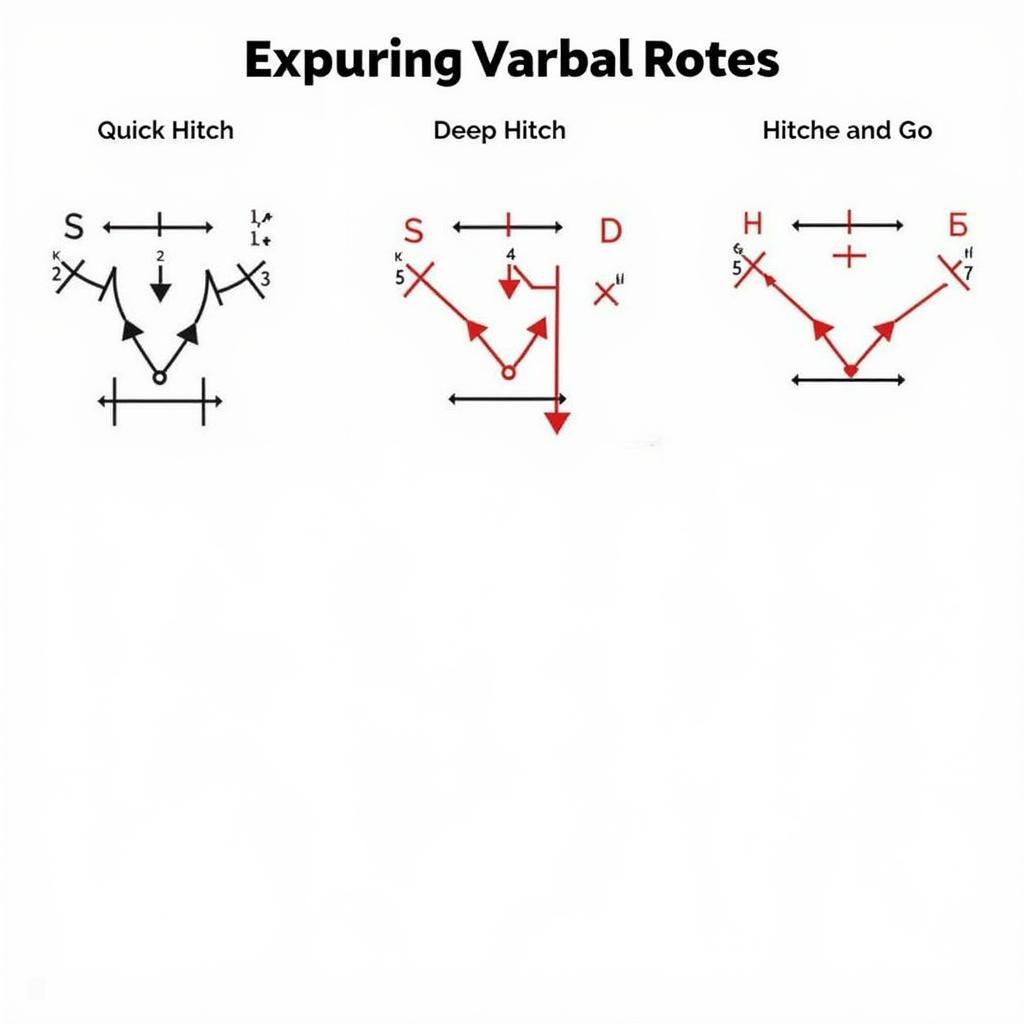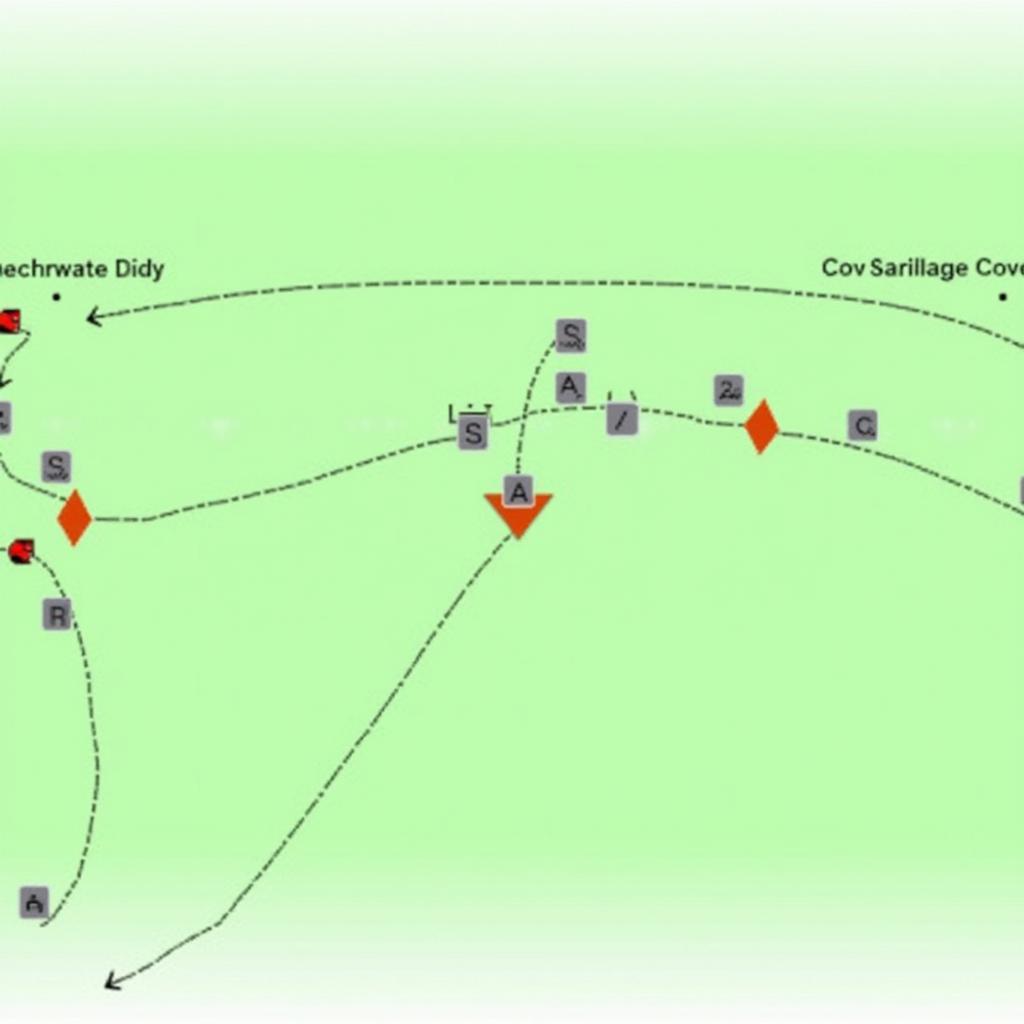The hitch route in football is a staple for quick gains and disrupting defensive schemes. It’s a simple yet effective pattern that can be a quarterback’s best friend in a variety of situations. This article dives deep into the mechanics, variations, and strategic advantages of the hitch route, providing you with a comprehensive understanding of this fundamental football play.
Understanding the Hitch Route Basics
At its core, the hitch route involves a receiver running a specified number of yards downfield, then abruptly stopping and turning back towards the quarterback to receive the pass. This quick change of direction creates separation from the defender, allowing for a clean catch. The hitch route can be run from various positions, including wide receiver, slot receiver, and even tight end, making it a versatile tool in any offensive playbook. This route thrives on timing and precision.
After the opening drive, our team started incorporating more hitch routes to exploit the weaknesses in their Cover 2 defense, similar to how some suggest using plays that can beat Cover 2 Man. The quick throws kept the defense on their toes and allowed us to maintain possession.
Variations and Advanced Techniques
The hitch route isn’t a one-size-fits-all play. There are several variations that can be employed to exploit specific defensive weaknesses. For example, the quick hitch involves a shorter route, typically around two to three yards, while the deep hitch can stretch to seven or eight yards. The choice depends on the defensive coverage, the quarterback’s arm strength, and the overall game situation. Another variation is the hitch-and-go, where the receiver initially fakes a hitch route before accelerating downfield. This move can catch defenders off guard, leading to big plays.
 Hitch Route Variations – Quick, Deep, and Hitch-and-Go
Hitch Route Variations – Quick, Deep, and Hitch-and-Go
Another key aspect of the hitch route is the receiver’s technique. A crisp plant and turn are crucial for creating separation. The receiver must also be able to secure the catch in traffic, as the hitch route often occurs in congested areas of the field.
Strategic Advantages of the Hitch Route
The hitch route offers several strategic advantages. It’s an excellent option against man coverage, as the quick change of direction can leave defenders trailing. It’s also effective against zone defenses, particularly Cover 2, as it exploits the soft spots between zones. Furthermore, the hitch route is a reliable play in short-yardage situations, as it provides a high-percentage completion opportunity.
While analyzing quarterbacks, we discussed the merits of different playing styles, comparing players like Jordan Love or Lamar Jackson and how they might utilize the hitch route effectively. The conversation emphasized the importance of quarterback adaptability to different offensive schemes.
“The hitch route is a bread-and-butter play for any offense,” says Coach John Smith, a veteran with 20 years of coaching experience. “It’s simple, reliable, and can be used in a variety of situations to move the chains.” It’s particularly useful for quarterbacks under pressure, providing a quick outlet for a completion.
 Hitch Route Effectiveness Against Cover 2 Defense
Hitch Route Effectiveness Against Cover 2 Defense
Why is the Hitch Route Effective?
- Creates Separation: The sudden stop and turn create space between the receiver and the defender.
- High Percentage Completion: The short distance and quick timing make it a reliable play.
- Versatile: Can be used against various coverages and from different receiver positions.
- Chain Mover: Effective in short-yardage situations and for maintaining possession.
Conclusion
The hitch route is a fundamental yet powerful tool in any football team’s arsenal. Its simplicity, versatility, and effectiveness make it a go-to play for quarterbacks and a nightmare for defenders. Mastering the nuances of the hitch route, including its variations and strategic applications, can significantly enhance an offense’s ability to move the ball and score points. So, next time you’re watching a game, keep an eye out for the hitch route – you’ll see just how impactful this seemingly simple play can be. Understanding how certain routes beat Cover 2 can be crucial to offensive success.
FAQs
- What is the ideal distance for a hitch route? It varies depending on the situation, but typically between 2 and 8 yards.
- Against which defensive coverage is the hitch route most effective? It’s effective against both man and zone coverages, especially Cover 2.
- What are the key coaching points for receivers running the hitch route? Crisp plant and turn, secure catch, and awareness of surrounding defenders.
- Can tight ends run hitch routes? Yes, tight ends can effectively utilize the hitch route, especially in short-yardage situations.
- How can the hitch route be used to set up other plays? The hitch-and-go is a common variation that utilizes the hitch as a deception.
- What’s the difference between a quick hitch and a deep hitch? A quick hitch is shorter (2-3 yards), while a deep hitch is longer (7-8 yards).
- What are some common mistakes when running the hitch route? Rounding off the route, not coming back to the ball, and failing to secure the catch.
You might also be interested in checking out the best Madden DS ROM if you want to practice running the hitch route virtually.
Other helpful resources
- Check out our article on Cover 2 defense strategies
- Learn more about different passing routes in football
For further assistance, please contact us at Phone: 0902476650, Email: [email protected] or visit our office at 139 Đ. Võ Văn Kiệt, Hoà Long, Bà Rịa, Bà Rịa – Vũng Tàu, Việt Nam. We have a 24/7 customer support team ready to help.





